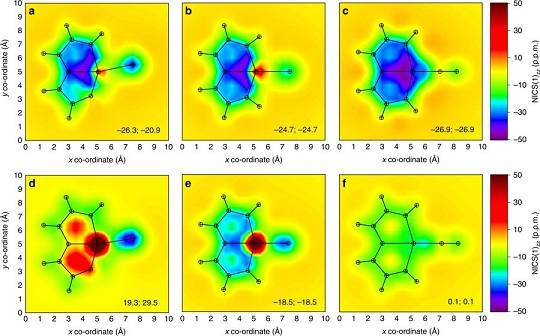All-metal Baird aromaticity
Submitted by Jun Zhu on Tue, 09/08/2020 - 14:39
The Baird’s rule has been applied to a large scope of organic molecular systems for rationalizing the aromaticity reversal in the lowest-lying triplet state. In this study, we demonstrate that the Baird’s rule can be also extended to all-metal systems with σ- and π-aromaticity.
https://pubs.rsc.org/en/Content/ArticleLanding/2020/CC/D0CC05586G#!divAbstract



